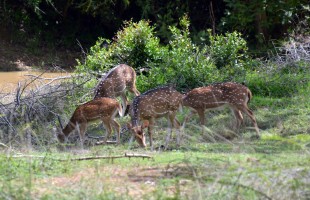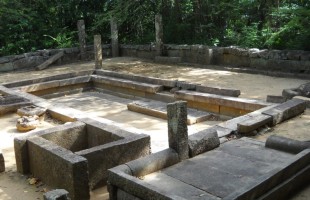A place of much spiritual significance to Buddhists in Sri Lanka, Mihintale is the place from which Buddhism originated in the country. In 247 BC, King Devanampiya Tissa of Anuradhapura, while deer hunting in the vicinity around the hill at Mihintale, met Mahinda, son of the great Indian Buddhist Emperor Asoka, and was converted to Buddhism. This great event is celebrated each year as a festival at Mihintale on the Poson full moon night which is generally in the month of June.
Situated 11 km north-east of Anuradhapura on the road to Trincomalee, the entire Mihintale site has many interesting places of historical interest. A wide stairway consisting of 1840 ancient granite slabs, leads majestically up the hill side. Laid out like the five dots on a dice, a ruined hospital and the remains of a complex of buildings flank the roadway before the base of the steps.
A partly ruined dagoba, built sometime around 60 BC, can be reached by a smaller flight of steps leading right at the first landing. This dagoba, Kantaka Cheitya, is particularly notable for its altar piece panels with their excellent sculptures of dwarfs, geese and other figures.
On the second landing is the monks’ refectory, and two 10th century AD stone slabs on which the rules and regulations of the monastery are inscribed. A small pool surmounted by a rampant lion reckoned to be one of the best pieces of animal carving in the country, is located just below the monks’ refectory.
The final narrow, steep stairway leads to the Ambasthale dagoba, which was built on the spot where Mahinda stood, when he met the king. A path from this point leads to a higher dagoba, the Mahaseya dagoba thought to contain relics of Mahinda. Above the Ambastale Dagoba is a huge rock on which Mahinda waited for his meeting with the king. At the foot of the hill topped by the Mahaseya dagoba is the Naga Pokuna or ‘snake pool’, so named because of the five-headed cobra carved in low relief on the rock face of the pool.



